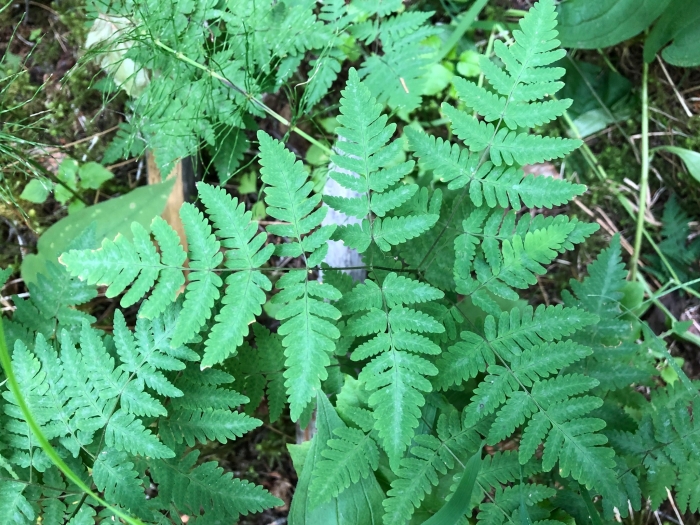Western Oakfern
(Gymnocarpium dryopteris)
Western Oakfern (Gymnocarpium dryopteris)
/
/

Jason Grant
CC BY 4.0






































































Estimated Native Range
Summary
Western Oakfern is valued for its delicate texture and ability to thrive in shady conditions, making it an excellent ground cover or accent plant in woodland gardens and shaded borders. It is relatively low-maintenance, requiring consistently moist soil and protection from strong sun. The cultivar ’Plumosum’ is particularly noted for its finely divided fronds and has been awarded the Royal Horticultural Society’s Award of Garden Merit. While it prefers moist, well-drained soil, it is adaptable to various soil types as long as they are not waterlogged. It is not typically associated with serious diseases or pests, but it can suffer from root rot in poorly drained soils. Western Oakfern is non-invasive and can be propagated by spores or division in the spring or autumn.CC BY-SA 4.0
Plant Description
- Plant Type: Fern
- Height: 0.5-1 feet
- Width: 1-1.5 feet
- Growth Rate: Slow
- Flower Color: N/A
- Flowering Season: Non-Flowering
- Leaf Retention: Deciduous
Growth Requirements
- Sun: Part Shade, Full Shade
- Water: Medium
- Drainage: Fast
Common Uses
Bank Stabilization, Deer Resistant, Low Maintenance, Rock Garden, Water Garden
Natural Habitat
Cool, moist forests and along stream banks in boreal and temperate regions of the Northern Hemisphere
Other Names
Common Names: Common Oak Fern , Oak Fern , Northern Oak Fern , Western Oak Fern , Eichenfarn , Dryoptéris De Linné , Dryoptéride Disjointe , Fougère-Du-Chêne , Gymnocarpe Du Chêne , Gymnocarpe Fougère-Du-Chêne
Scientific Names: Gymnocarpium dryopteris , Dryopteris linnaeana , Polypodium dryopteris , Phegopteris dryopteris , Gymnocarpium dryopteris var. dryopteris , Currania dryopteris , Aspidium dryopteris , Lastraea dryopteris , Thelypteris dryopteris , Lastrea dryopteris
GBIF Accepted Name: Gymnocarpium dryopteris (L.) Newman